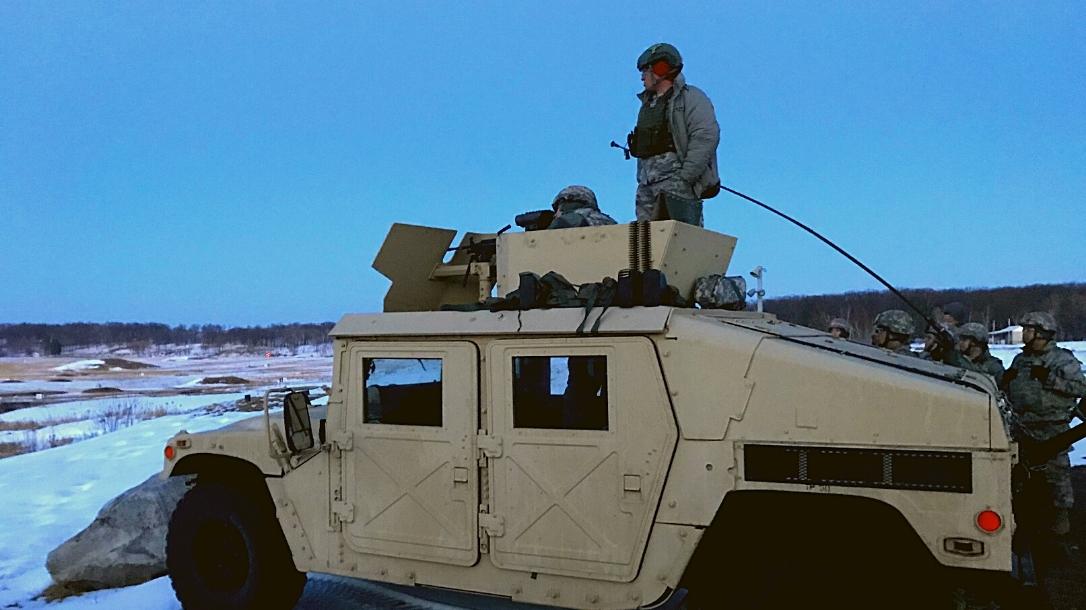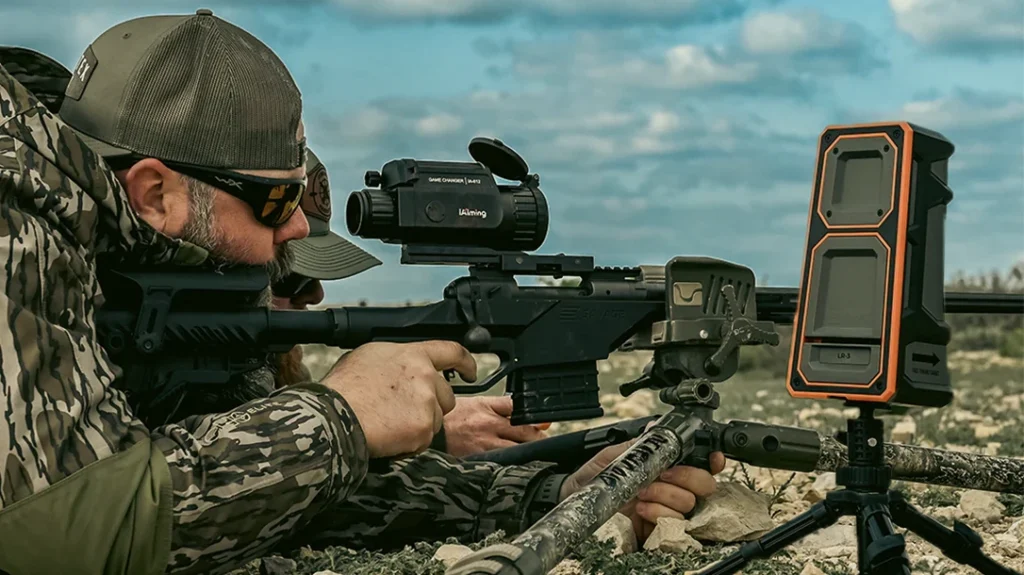Whether you’re hunting, shooting a match, training, or working outside, having the right tactical cold-weather gear can make the difference between a good day and a miserable, exhausting day. Our guide will help you select the best gear for your mission.
Tactical Cold Weather Gear Primer!
New Gear: Insulated 5.11 Apparel Featuring PrimaLoft Insulation
Right in time for the coming cooler weather, 5.11 just announced the launch of a new Technical clothing line featuring PrimaLoft Insulation. The high-performance insulation brings wide line of jackets, pants and vests for outdoor pursuits.
“We are excited to expand the collaboration between our two great brands and to offer our customers a larger selection of products that live up to our Purpose-Built Gear motto for this fall and winter, ” said Francisco J. Morales, CEO, 5.11. “By combining our expertise in creating durable and reliable apparel with PrimaLoft’s innovative insulations, we’re able to offer our customers unparalleled performance that will help them to live the Always Be Ready lifestyle.”
Advertisement — Continue Reading Below

The Adventure PrimaLoft Insulated Jacket ($130) and Starling PrimaLoft Insulated Jacket ($130) come packable. The weather-resistant outer shells feature 80 grams of PrimaLoft Gold Insulation in the body and 60 grams in the sleeves and hood. With nylon ripstop construction, these shells should make a welcome addition on the trail.
Fans of vests get the Adventure PrimaLoft Insulated Vest ($98) and Starling PrimaLoft Insulated Vest ($98). Weather-resistant shells wrap around 80 grams of PrimaLoft Gold insulation. Pair them with a Dylan Reversible PrimaLoft Shirt Jacket ($155) for a versatile layered system. The Shirt Jacket features 100 grams of PrimaLoft Gold Insulation and a Nylon shell. For more info, visit 511tactical.com.
Advertisement — Continue Reading Below
The Principles of Cold Weather Gear
“Cold weather” can mean a lot of things to different people. Someone from Miami might define cold weather as anything below 60 degrees. On the other hand, someone from Minnesota thinks that 60 degrees is shorts weather, and it’s only chilly when it goes below zero. But because definitions can be fluid, when you’re selecting tactical cold weather gear it’s important to bear in mind what cold weather means to you. Additionally, making sure that you’re adhering to the proper principles of cold weather operations will drive your gear selection as well. In cold environments, it’s important to 1) stay hydrated, 2) dress in layers, and 3) avoid overheating.
Cold Weather Base Layers
Preparing for the cold starts with an inward-to-outward approach. Selecting your tactical cold weather gear should start with the base layer, and move outward from there. Base layers will include a top and bottoms, depending on how cold your operating environment is going to be. Base layers range in all types of material and can run from very lightweight and breathable to very warm. Some companies try for a “one size fits all” approach to their base layer, trying to craft a product that will work for most people in most conditions.

Advertisement — Continue Reading Below
Our pick: Under Armour ColdGear Base 4.0. The UA ColdGear Base 4.0 represents the fourth generation of cold weather base layers from the apparel company. Available for both shirts and leggings, the UA Base 4.0 is designed with a “jack of all trades” approach in mind. It’s not the warmest nor the most breathable, but by taking a middle-of-the-road approach, it performs well in most situations. Even so, in extremely cold temps it would still be a viable choice if paired with the correct outerwear.
Tactical Cold Weather Jackets
People like to fixate on the jacket, or tactical winter coat, that they’re going to select. Despite the importance of base layers, many people will simply choose a jacket or coat and call that good. Furthermore, jackets and coats are not “all environment” items. A light jacket for fall wouldn’t be functional standing post in the Rockies in the middle of January. Similarly, that coat you have for working outside in Minnesota in February would roast you in temps over 30 degrees. We have two tactical cold weather gear options for your jacket.
Our pick for mild cold weather: Beretta USA Flank Windbloc Jacket. This jacket from Beretta incorporates PolartecWindbloc, providing maximum weather protection from wind, water and cold conditions. This jacket is great in conditions to the mid 30s, and if paired with a warm base layer could go colder than that. Large pockets provide ample storage, and each sleeve has an additional zippered pocket. These are perfect for credit cards, credentials, or other small items. The sleeve pockets also feature a hook and loop patch panel.
Advertisement — Continue Reading Below

Our pick for severe cold weather: Massif Elements OCP Jacket. Designed for hard-use military and law enforcement users, this piece of tactical cold-weather gear is fantastic. In addition to protecting from the cold, it’s also flame resistant. This is a great feature for first responders or military members who might encounter dangerous environments in winter. The Massif jacket has loads of pockets, including a zippered sleeve pocket that can be accessed while wearing body armor. A fleece-lined collar also flips up to protect your neck from the wind. At almost $600 the Massif jacket is pricey, but what’s the price of staying warm?
Tactical Cold Weather Pants
For some reason, pants get overlooked almost as often as the base layer. Again, maybe it’s because pants aren’t as cool as a sweet jacket, but they’re just as important. Yes, while keeping your core warm is key to staying alive, it’s easier to regulate your core temp if your lower body is also well protected. To that end, tactical cold weather gear for your lower half needs to take into account the same considerations as jackets.
Advertisement — Continue Reading Below
Our pick for mild cold weather: KUHL Transcendr Pant. The Transcendr is a fantastic choice for active pursuits in lousy weather. It incorporates wind and water resistance, as well as an enhanced range of motion. Designed for wear with or without a base layer, the KUHL pant has articulated knees and a bottom drawstring to close the leg off against moisture.

Our pick for severe cold weather: Carhartt Men’s Washed Duck Dungaree Flannel Lined Work Pant. Carhartt may not be an explicitly tactical brand, but its pants are well-known for holding up in winter weather. Beloved by blue-collar workers, the flannel-lined dungarees will also enhance your gray man appearance. Sometimes the best way to be tactical is to not appear tactical.
Advertisement — Continue Reading Below
Tactical Cold Weather Accessories
Getting the base layer, jacket, and pants is important. But your accessories are going to matter a lot too, whether that’s tactical underwear, gloves, boots, socks, or a hat. You could make great choices with your outerwear and base layer, but choose bad socks and boots and end up miserable. Imagine you’re standing on top of a HMMV in -20 degree weather wearing summer weight boots and thin socks. Your chest and legs may be warm, but the steel roof of the vehicle is sucking every ounce of warmth out of your body through your toes, which you can’t even feel after 20 minutes. That’s why tactical snow boots, or just good cold weather boots and socks are so important.
Our choice: North Face ThermoBall Lifty II Boot. Your feet will thank you in the North Face boots. Built in lightweight ThermoBall Eco insulation keeps your toes warm, and the boot’s waterproof upper will also keep your feet dry.
Socks and tactical winter gloves are very personal choices. For socks it’s hard to go wrong with merino wool socks from any number of reputable companies. Gloves are a very personal purchase, since some users prefer to sacrifice warmth for mobility, and others prefer maximum warmth. No matter what, your glove choice must reflect your environment and the equipment you’ll need to operate with your hands. If shooting might be called for, your gloves need to allow you to properly manipulate the gun. Even little things like using your phone are affected by your glove choice, so choose wisely.
Advertisement — Continue Reading Below
Ultimately, selecting your tactical cold weather gear is the same as any other gear. Mission drives the gear train, so make selections that are appropriate for your environment and goals. Just because high speed operators use a piece of kit doesn’t mean it’s the right choice for you. Conversely, just because something’s affordable and popular doesn’t make it the right choice.
























